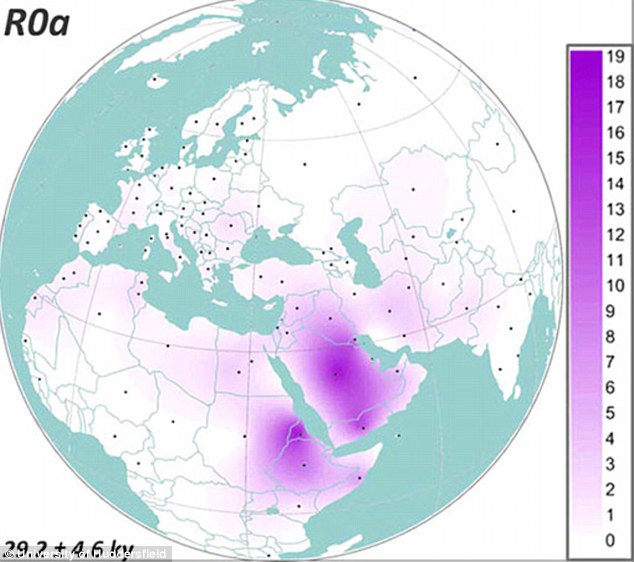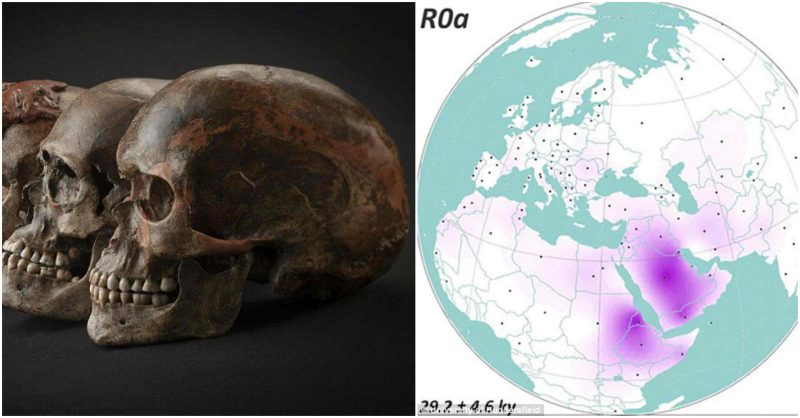When one generally thinks of the Ice Age, they probably think about how many animals and people were victims of the dreadful event.
How could one survive the inevitable frigid temperatures? Well, there just so happened to be several areas where humans were able to survive the Ice Age. In fact, there were whole populations who found refuge in these areas.
Researchers are beginning to study a rare DNA lineage which suggests that one of these populations found refuge in Southern Arabia. In fact, the findings are beginning to prove that the humans were in Southern Arabia almost 10,000 years earlier than first thought.

Source University of Huddersfield
A special group of researchers specialize in studying the analysis of human DNA are studying at the University of Huddersfield. They have now found new evidence that there was more than just one area of refuge in Southern Arabia. South Arabia is known as a historical region which consists of the southern Arabian Peninsula. It is mainly centered in the Republic of Yemen.
The researchers took to studying a rare mitochondrial DNA lineage known as ROa. This DNA lineage is mostly found in Arabia and the Horn of Africa. The mitochondrial DNA is only passed from mothers to their children.
The lead researcher on the project, Francesca Gandini, had said that she and her team took the group of mitochondrial DNA, otherwise known as mtDNA, which shared some of the same mutations that belonged to the group known as haplogroup. She added that the team sequenced the mtDNAs and looked at the geographic origin to apply what is called the molecular clock in order to calculate when these haplogroups originated.
The results the team got allowed them to hypothesize the first members of this particular
ineage known as the Roa. They had already been living in Southern Arabia before the last Ice Age. This means they had probably survived during the Glacial Maximum for one or more of the refuges.
Research showed that around 20,000 years ago, during the last Ice Age, or Pleistocene glaciation, people had crowded the region for protection.
After this, nearly 15,000 years ago, the Ice Age receded and the people in this refuge had disappeared.
They ended up populating around Arabia and the Horn of Africa; maybe even venturing even further, though that is not proven quite yet.
Gandini and her team had actually found the lineage and believe it is more ancient than they previously thought. It even has a deeper presence in Arabia than what is earlier believed. This research begins to question that if people had survived the Ice Age in that particular region, then that means there was a refuge during the Pleistocene period.
Many researchers believed that people didn’t settle in large numbers in Arabia until agriculture had developed. This would have dated to around 10,000 to 11,000 years ago.
The team of researchers added that there is a possibility that the people in the ROa group had moved throughout the Middle East and into Europe at one point. They added that there could have been a trading network and gene flow from Arabia and into the territories that are now known as Iran, Pakistan, and India.
Other archaeological studies found that modern humans had come into Europe around 45,000 years ago. This had led to the demise of the Neanderthals, even though there was evidence the modern humans bred with them.
About 12,000 years ago after the Ice Age ended, glaciers had covered Scandinavia and northern Europe all the way to northern France. The Ice Age had peaked around 25,000 to 19,000 years ago when the ice melted. The ice sheets had retreated, allowing the region to repopulate.
David Reich and his team had found research regarding the genetic analysis of Upper Paleolithic Europeans, finding a new lineage of early modern humans. They had found genome-wide data from 51 modern humans who lived around 45,000 to 7,000 years ago in order to study this idea of repopulation.
He studied remains from three 31,000-year-old skulls – one from Dolni Vestonice in the Czech Republic, a lower jaw of a 19,000-year-old Red Lady of El Miron Cave, and a skull of a 14,000-year-old from the Villabruna Italy. The genetics had shown that all Europeans came from one single population which lasted throughout the Ice Age almost 37,000 years ago.
The population has branches from different parts of Europe, one including Belgium. Present-day Europeans can actually track their ancestry back to this particular group who lived around that area 35,000 years ago.
The study had also shown some mixture with Neanderthals. Around 45,000 years ago, modern humans had spread across Europe. The prehistoric humans had three to six percent of Neanderthal DNA, but most humans today are down to two percent.
Reich said that Neanderthal DNA is almost toxic to modern humans. This study shows the natural selection is removing the Neanderthal ancestry.
Some of the ancient specimens contain frequent contamination with microbial DNA. Many researchers have come across this issue, so in order to solve the problem, scientists used a technique called in-solution hybrid capture enrichment.
Researchers used about 1.2 million 52-based DNA sequences to study the positions in the human genome. After they had washed the ancient DNA over the 1.2 million probe sequences, they had sequenced the DNA that was caught by the probes. There were only four samples of the prehistoric European modern humans which were 45,000 to 7,000 years old.
Although it was a difficult process, the researchers are coming up with new ways in order to test the contaminated DNA sequences.
